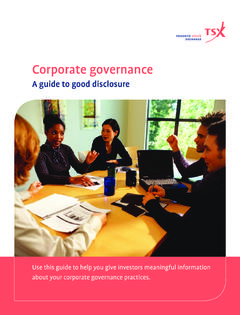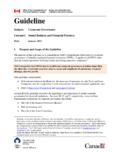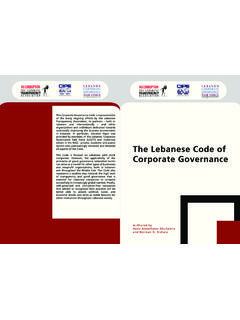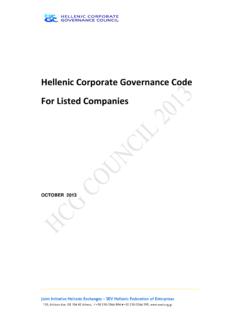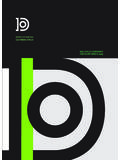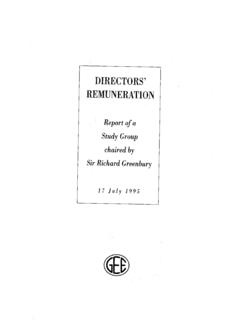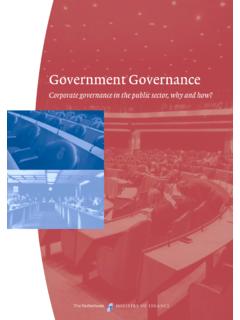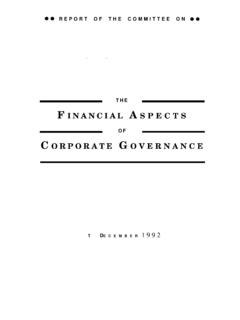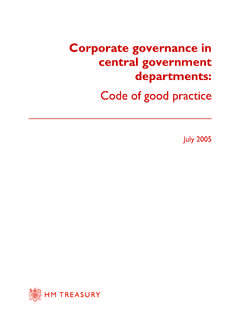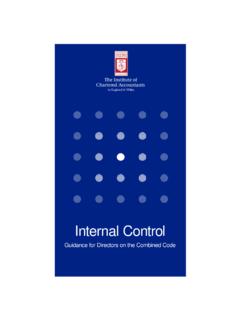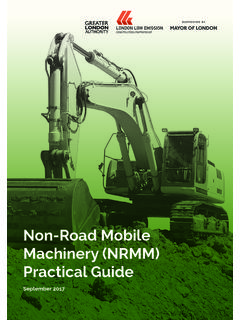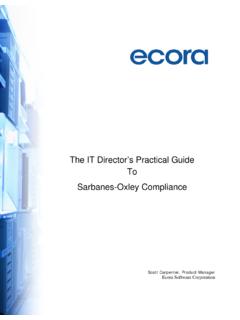Transcription of The KPMG Review Internal Control: A Practical Guide
1 The KPMG ReviewInternal Control: A Practical GuideThis book has been prepared to assist clients and others in understanding the implications of the ICAEW publication Internal control : Guidance for Directors on the Combined Code. Whilst every care hasbeen taken in its preparation, reference to the guidance should be made, and specific advice sought wherenecessary. No responsibility for loss occasioned to any person acting or refraining from action as a resultof any material in this publication can be accepted by is registered to carry on audit work and authorised to carry on investment business by theInstitute of Chartered Accountants in England and Wales. c KPMG October 1999 All rights reserved. No part of this publication may be reproduced, stored in any retrieval system, ortransmitted in any form or by any means, electronic, mechanical, photocopying, recording, or otherwise,without the prior permission of the publisher.
2 Designed and produced by Service Point (UK) LimitedPrinted by Service Point (UK) LimitedFrom discussions with many Board directors over the years since the Cadburyand the Rutteman guidelines were issued, there has been much criticism ofregulators and consultants alike that organisations are being driven to createbureaucratic processes - divorced from managing the business - with the solepurpose of complying with regulations. The spirit of Cadbury was right, theenactment was flawed. By taking the easy option of reporting on internalfinancial control companies created an annual Review process disconnectedfrom managing the Combined Code and Turnbull guidance recognise that this was neitherbeneficial for organisations, nor provided the comfort sought that governancewas being enhanced.
3 There has always been an opportunity to enhance businessperformance through better management of risk. With Turnbull, the connectionbetween managing the business and managing risk is now explicit. This Guide has been written with this objective in mind and recognises thatwhilst one size does not fit all, the principles and Practical issues are has relevance to the Board member and line manager owe my thanks to those who have provided me with the challenge over theyears to provide Practical solutions. I believe this book meets those challengesby providing genuinely Practical guidance which, in my view, is as much aboutenabling performance as it is about embedding risk and control . My thanks inparticular to Timothy Copnell and Christopher Wicks, without whose effortsthis book could not have been StockHead of Corporate Governance ServicesKPMGF orewordExecutive summary.
4 11 Introduction.. Background .. Objectives.. Groups .. Effective date .. 132 The importance of Internal control and risk management.. 143 Maintaining a sound system of Internal control .. Responsibility for the system of Internal control .. The system of Internal control .. Understanding the nature and context of control .. 224 Reviewing the effectiveness of Internal control .. Responsibility for reviewing the effectiveness of Internal control .. The process for reviewing effectiveness .. Business objectives .. Risk identification and assessment .. Identification of appropriate controls .. Monitoring of controls .. 405 Disclosure.. The new requirements .. Implementation .. Specimen statements on Internal control .. 546 Internal audit.. Background.
5 The revised requirements.. The role of Internal audit .. Other assurance providers .. 607 The KPMG methodology.. 61 ContentsAppendicesI Recommended immediate actions and decisions.. 65II Specimen statements.. 69 III Internal control benchmarking.. 74IV Board timetable.. 77V Criteria for reviewing the effectiveness of Internal control .. 80VI Questions to ask when assessing the effectivenessof Internal control .. 84 VII KPMG offices in the UK.. 87 Despite speculation in the financial press that the final guidance on internalcontrol would be essentially similar to April s consultative document, the finalguidance was significantly tightened by the removal of the option for a singleannual Review . This should act to discourage bureaucratic procedures thatprovide neither the depth nor quality of information provided by the nowrequired regular Review process.
6 At KPMG we are particularly pleased to seethat the final guidance reflects many of the recommendations made in ourresponse to the consultative document. On 27 September, the ICAEW published Internal control : Guidance forDirectors on the Combined Code(the Turnbull guidance). The guidance aimsto provide assistance to directors of listed companies in applying principle the Combined Code on Corporate Governance; and determining the extentof their compliance with code provisions and The document seeksto reflect sound business practice that can be adapted to the particularcircumstances of individual compliance with the guidance is expected in respect of accounting periodsending on or after 23 December 2000. However, to allow companies to takethe necessary steps to adopt the new guidance, transitional provisions apply foraccounting periods ending on or after 23 December 1999 and up to 22 December 2000.
7 These are: as a minimum, state in the annual report and accounts that proceduresnecessary to implement the guidance have been established or anexplanation of when such procedures are expected to be in place; and report on Internal financial controls pursuant to Internal control andFinancial Reporting - Guidance for directors of listed companies registeredin the UK (the Rutteman guidance).A company which adopts this transitional approach should indicate within itsgovernance disclosures that it has done summaryExecutive Summary2 KPMG recommends that the onus should be on developing and implementing anembedded process. This may mean not being in a position to comply fully in yearone; nevertheless, we believe this to be preferable to developing a make do solution. ResponsibilitiesThe responsibilities of both directors and management are well defined in theguidance.
8 Reviewing the effectiveness of Internal control is an essential part ofthe Board s responsibilities while management is accountable to the Board fordeveloping, operating and monitoring the system of Internal control and forproviding assurance to the Board that it has done of the Review work may be delegated to the Audit Committee andother appropriate Board committees such as a Risk Committee or Health andSafety Committee. However, the Board as a whole should form its own viewon the adequacy of the Review after due and careful enquiry by it or directors responsibilities in respect of maintaining a sound system ofinternal control are discussed in Chapter 3. The directors responsibilities forreviewing the effectiveness of such a system are dealt with in Chapter recommends that for most organisations the formulation of a RiskCommittee would be beneficial and appropriate.
9 It is important that AuditCommittees do not become overburdened and deflected from their alreadysignificant the effectiveness of Internal controlAt the heart of the guidance is the premise that sound Internal control is bestachieved by a process firmly embedded within a company s , the guidance asserts that the Board cannot rely solely on such anembedded process, but should regularly receive and Review reports on internalcontrol from management. A single annual assessment in isolation is reviewing reports during the year, the Board should: consider what are the significant risks and assess how they have beenidentified, evaluated and managed; assess the effectiveness of the related system of Internal control in managingthe significant risks, having regard, in particular, to any significant failings orweaknesses that have been reported; consider whether necessary actions are being taken promptly to remedy anysignificant failings or weaknesses.
10 And consider whether the findings indicate a need for more extensive monitoringof the system of Internal paragraph 31 In addition to the regular Review process, the Board is required to undertake aspecific annual assessment for the purpose of making its public statement oninternal control . The assessment should consider issues dealt with in reportsreviewed by it during the year together with any additional informationnecessary to ensure that the Board has taken account of all significant aspectsof Internal control . This assessment should cover not only the accountingperiod, but also the period up to the date of approval of the annual report SummaryThe Board s annual assessment should, in particular, consider: changes since the last Review in the nature and extent of significant risks andthe company s ability to respond effectively to changes in its business andexternal environment; the scope and quality of management s ongoing monitoring of risks and thesystem of Internal control , and, where applicable, the work of its internalaudit function and other providers of assurance.
